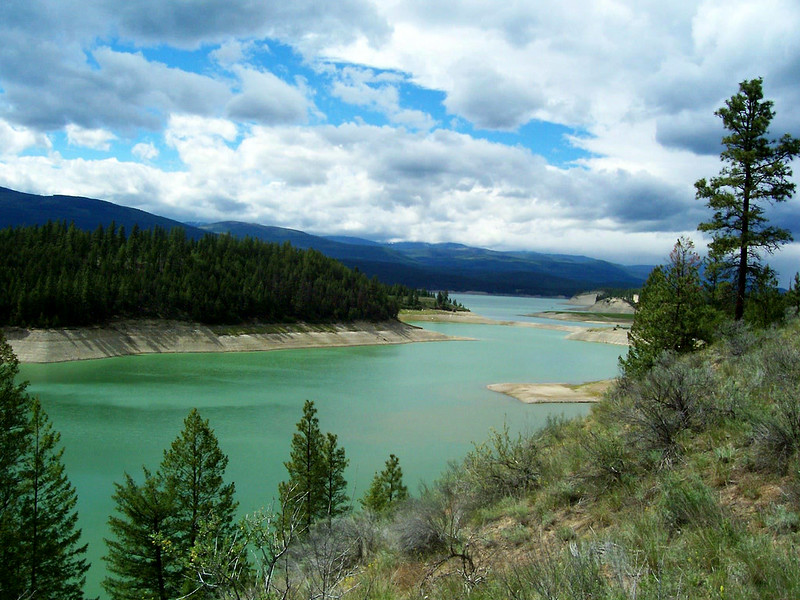Commissioners weaken selenium standard
April 25, 2022

by David Brooks, executive Director, Montana Trout Unlimited; Andrew Gorder, legal director, Clark Fork Coalition; Ellie Hudson-Heck, conservation assistant, Idaho Conservation League; Derf Johnson, Clean Water Program director and staff attorney, Montana Environmental Information Center
Commissioners not telling the truth about selenium standard
As the adage goes: everyone is entitled to their own opinion, just not their own facts. The fact is, the recent opinion piece signed by the Lincoln County Commissioners (Montana Standard Feb. 27) concerning the establishment of a scientifically justified selenium standard is long on opinion and painfully short on facts.
Ignoring the facts, the Commissioners aim to weaken our water quality standards for Montana’s treasured Lake Koocanusa and the Kootenai River in order to satisfy a foreign mining company that is harming our water, fish, and communities.
The Commissioners make the erroneous claim that the process to establish the standard was rushed over three months and excluded the public, including themselves. In reality, the Commissioners have been involved, alongside many of us for the better part of a decade in public meetings, to achieve this standard. They participated throughout a robust, and transparent, rulemaking process, years of data collection, community discussions, and development of the protective standard.
The Commissioners once again falsely state that the new selenium standard is more stringent than federal guidelines. Again, not true. Montana regulators applied the federal standard for acceptable levels of selenium in fish tissue and used peer-reviewed scientific models to determine a protective water threshold to protect Koocanusa’s fish. To be clear, the state standard is the federal standard. It relies upon six years of local data collection and is based on toxic levels of selenium in Koocanusa right now. The objective is to protect fish in Koocanusa. Given these facts, any call to weaken the standard is a move against protecting fish and communities in Montana and ignores our downstream neighbors in Idaho.
The Commissioners distort the facts about the federal guidelines for selenium standards. Those guidelines clearly recommend site-specific standards based on local data. After six years of investigating selenium in Lake Koocanusa, a diverse team of selenium experts found that the local data requires a standard of 0.8 ug/L to protect fish and aquatic life. The sad fact is that several species of fish in the reservoir already exceed the Environmental Protection Agency’s toxicity threshold for selenium. To be crystal clear, selenium is already at toxic levels in the reservoir because Teck Coal’s Canadian mines have been leaching selenium into the reservoir for decades.
A shared, protective standard

Contrary to what the Commissioners published in their error-filled letter, Lake Koocanusa has been listed as impaired under Montana’s 303(d) list due to selenium contamination since 2012. This listing was a precursor to the six-year process that Montana and British Columbia embarked on to design a shared, protective selenium standard.
With respect to Idaho’s standard, the science is clear that selenium toxicity bioaccumulates in the food web, and that it concentrates more in slow moving waters than in fast moving waters. That is why both Montana and Idaho adopted 3.1 ug/L in the Kootenai River, and 0.8 ug/L was needed for the slow-moving reservoir in Montana. In plain language, lakes are more vulnerable to selenium toxicity than rivers, and Lake Koocanusa is a worst-case scenario because it has been receiving selenium from Canada for several decades. Another very important and overlooked fact is that Idaho also recently listed the Kootenai River as impaired due to selenium, in both fish and water.
Given that the source of this problem is entirely Canadian, and that Montanans gain nothing from weakened standards except more pollutants from mining, why are the Commissioners defending Teck Coal and attacking a standard designed to protect Montana’s waters? This is the very same company that has been fined millions of dollars for releasing contaminants into rivers flowing into Koocanusa and the Kootenai, has repeatedly failed to meet water quality objectives in B.C., and is the subject of an investigation into a westslope cutthroat trout population collapse.
Read: The selenium battle of Lake Koocanusa
The facts is: Montana’s best interest is in holding international polluters accountable for the selenium flowing into our state’s waters from Canadian mining operations. The peer-reviewed scientifically robust process for establishing this standard included years of data collected by some of the top selenium experts in the world. The resulting standard was adopted to protect Koocanusa’s waters and the aquatic life that support our businesses and way of life. It’s a Montana-made solution that we should support and be proud of, not undermine with misinformation.
